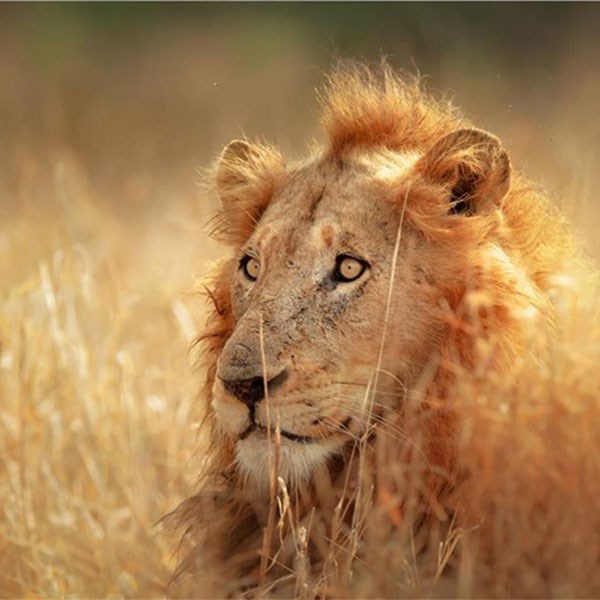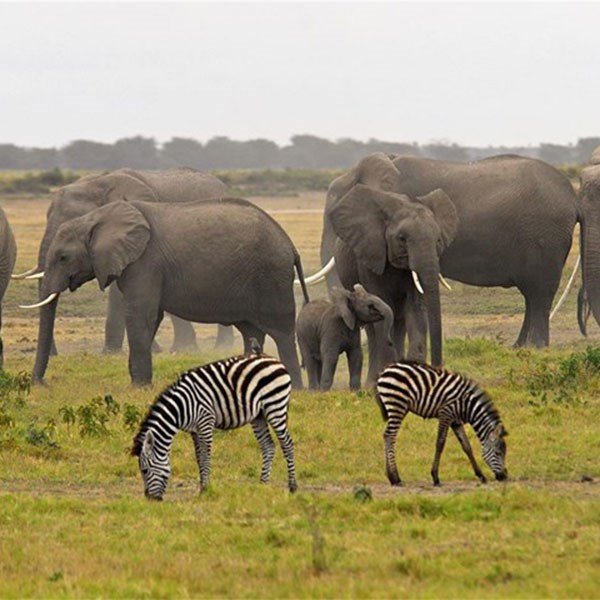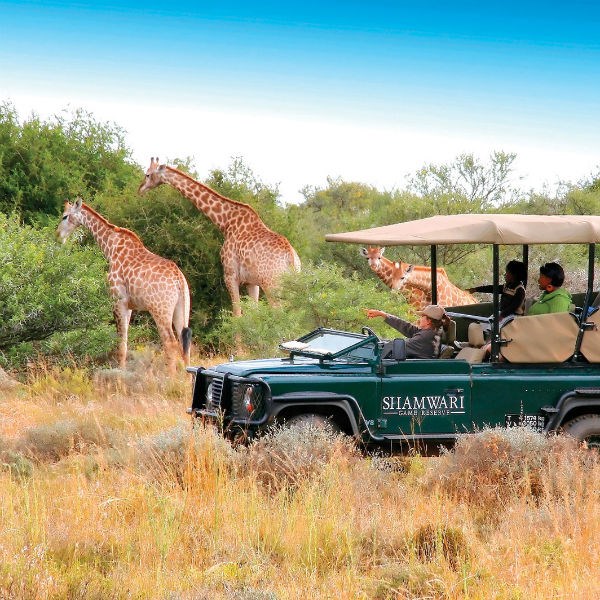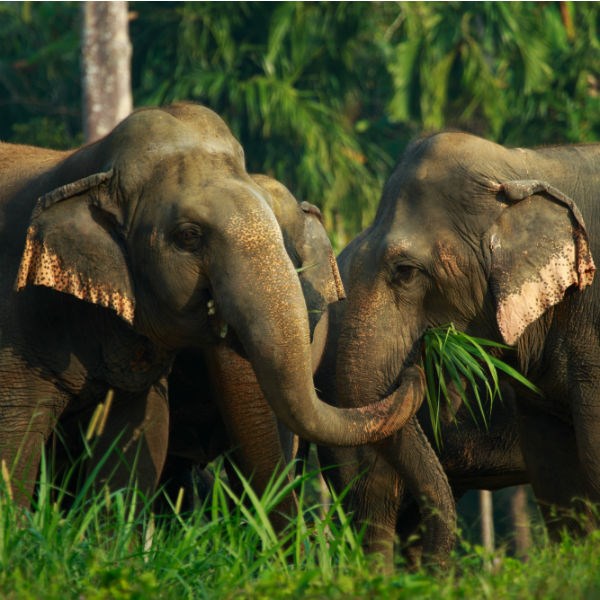Introduction
Home of Born Free and Out of Africa movie locations, plus Africa’s highest peak, a safari here will be one of the most memorable things you will ever do, with remote fly-in lodges, charming camps in achingly beautiful settings and of course the Big Five wildlife to spot. Blessed with a stunning Indian Ocean coastline, head to the beaches to relax on afterwards.
Plan a tour full of unforgettable experiences
At a glance
Emirates gateway: Nairobi Jomo Kenyatta International Airport, Kenya
Time zone: GMT + 3 hours
Currency: Kenyan Shilling (KES). US Dollars widely accepted, as are most major credit cards, while ATMs are found in key tourism and travel destinations.
Languages: Swahili and English are the official languages.
Transfers from Airport to Nairobi: Nairobi: 18 kilometres
Highlights
Kenya boasts Indian Ocean beaches, archetypal vast savannah, the dramatic Great Rift Valley and 21 national parks, as well as many private conservancies.
-
One of nature’s most incredible wonders, the “great migration” is the annual movement of around 1.5 million wildebeest between July and October.
-
The David Sheldrick Wildlife Trust is an orphanage in Nairobi for baby elephants and rhinos before they are re-introduced to the wild.
-
Few things are more iconic of Africa than the Maasai people dressed in their red ‘shuka’ and adorned in rainbow-coloured beads.
-
Close to Mombasa is the dazzling 10km-stretch of white sand at Diani Beach, on the Indian Ocean.
-
See the elephants of Amboseli National Park at the base of Kilimanjaro, an unforgettable experience.
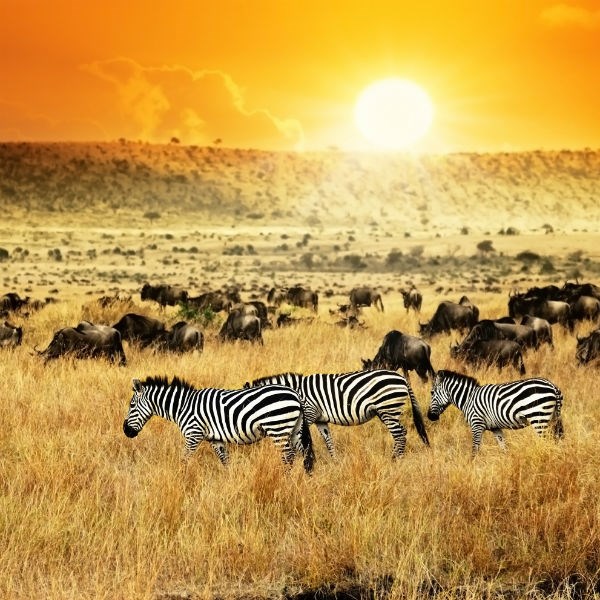
Did you know ?
- Kenya’s population is made up of more than 40 ethnic groups – the largest Kikuyu ethnic group only accounts for around 20% of the 45 million people living in the country.
- Mount Kenya in central Kenya is the second highest mountain in Africa at 5,199 metres – only Kilimanjaro in neighbouring Tanzania is higher.
- Coffee production is Kenya’s second largest industry behind tourism, although Kenyans themselves are not big coffee drinkers and the commodity is mainly exported around the world.
- Movement in the earth’s crust 20 million years ago formed Kenya’s Great Rift Valley, which runs from the north to the south of the country.
- There are only two types of season in Kenya – the rainy seasons (November and April-May) and dry seasons (June-October & December-March); dry seasons are the best times for game viewing.
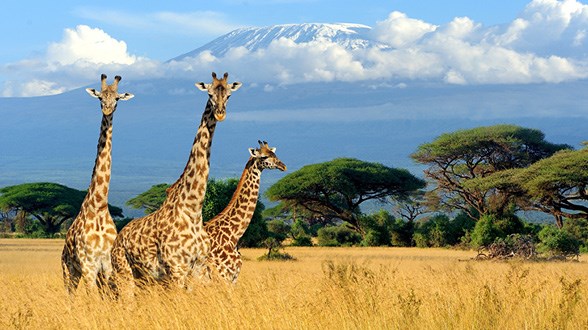
Cuisine
Meat plays a prominent part in Kenyan cuisine, particularly barbecued goat (nyama choma), which is traditionally eaten with the hands. Beef and chicken is widely available as an alternative to goat. Other Kenyan specialities include ugali, which is a cornmeal paste, and beef stew. Swahili cuisine on the coast is influenced by other Indian Ocean food with popular dishes such as seafood curries, rice in coconut milk and samosas. Tropical fruits are also cheap and widely available including mangoes, pawpaws, oranges, pineapples and bananas. International restaurants can also be readily found in major tourist centres.
History
Tribes from across Africa have settled in Kenya over the last few millennia including the Maasai who moved from Sudan in the 17th century. The Portuguese were the first Europeans to arrive in the late 15th century and they were later followed by the British who colonised Kenya in the 19th century. There was a long battle for independence from British rule during the 20th century, including the Mau Mau rebellion of the 1950s. Kenya finally achieved independence in 1963 with Jomo Kenyatta becoming the country’s first president.
Culture
Kenya has a rich cultural history encompassing more than 40 tribal groups, each with their own customs and ways of life.
The most iconic of these tribes are the semi-nomadic Maasai with their colourful traditional dress and eye-catching beaded jewellery – they have become one of the most famous sights in Kenya. Other nomadic tribes include the Samburu and Turkana, and it is worth visiting traditional villages to experience their culture.
Despite this multitude of different ethnicities, cultures and languages, Kenyans have developed a strong sense of national pride with Swahili as their national language, although English remains the country’s official language.
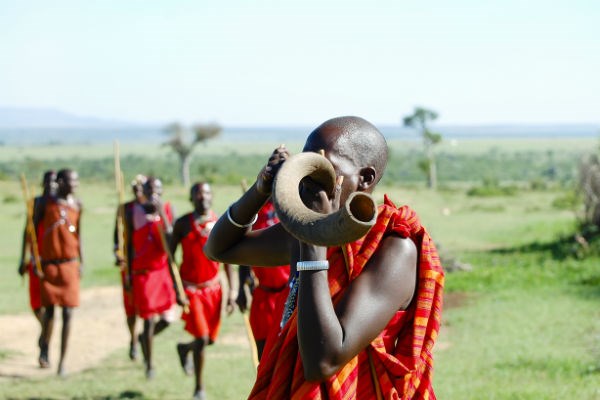
Wildlife
Seeing the “big five” animals – lion, elephant, buffalo, rhino and leopard – is one of the major attractions of visiting Kenya.
Few countries in the world can match its wildlife, which extends to most major species in Africa across more than 40 national parks and nature reserves around the country.
Safaris are a way of life in Kenya with the biggest annual attraction being the wildebeest migration on the Serengeti plains when more than two million animals move from Tanzania’s Serengeti National Park to the Maasai Mara in Kenya between July and October.
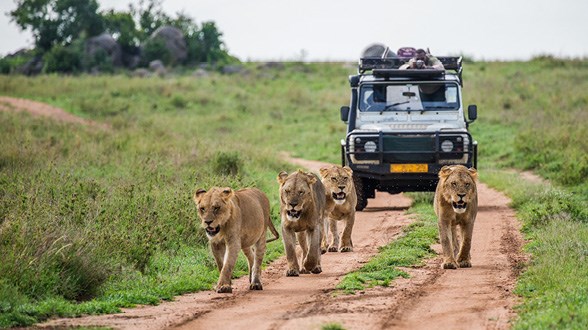
Areas of Kenya
Nairobi
Many tourists simply use the Kenyan capital as a gateway to a safari holiday but there are reasons to stay in this thriving modern city, which was created by the British as a depot for the East Africa railway in the late 19th century. As well as its urban attractions, Nairobi is also home to the Langata Giraffe Centre, which raises endangered Rothschild giraffes, as well as an elephant and black rhino orphanage run by the David Sheldrick Wildlife Trust and Nairobi National Park with its abundant wildlife just seven kilometres from the central business district.
Maasai Mara
This national reserve is one of the most amazing wildlife attractions in the world, let alone just Africa. Regular rainfall and plentiful vegetation have created a rich eco-system teeming with different species including the “big five” game animals, as well as zebra, giraffe, hyena, impala, eland and series types of gazelle, not to mention 400 types of bird. Game viewing is good throughout the year although the migration period between July and October is a particularly magical and popular time to visit. The reserve has fenceless borders with several private wildlife conservancies including Tanzania’s Serengeti National Park.
Mombasa Coast
Kenya’s other major attraction is the gorgeous strip of white sandy beaches located to the north and south of the country’s second biggest city, Mombasa. Visitors can take a dip in the warm Indian Ocean waters, and even go swimming with dolphins or turtles. Alternatively take a leisurely trip on a traditional dhow sailing boat. The more active holidaymaker can also enjoy some of Africa’s best diving among colourful coral reefs or try their hands at surfing or kitesurfing. The region, with the bustling port of Mombasa at its heart, has a rich Swahili culture infused with elements of Asian and Arab culture.
